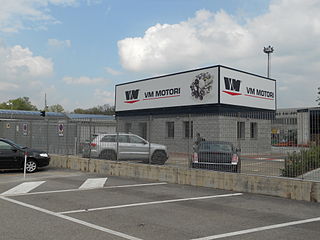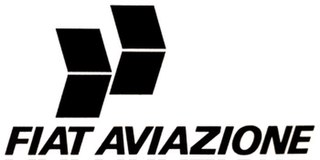
Leonardo S.p.A., formerly Leonardo-Finmeccanica and originally Finmeccanica, is an Italian multinational company specialising in aerospace, defence and security. Headquartered in Rome, Italy, the company has 180 sites worldwide. It is the eighth largest defence contractor in the world based on 2018 revenues. The company is partially owned by the Italian government, which holds 30.2% of the company's shares and is its largest shareholder.

IHI Corporation, formerly known as Ishikawajima-Harima Heavy Industries Co., Ltd., is a Japanese engineering corporation headquartered in Tokyo, Japan that produces and offers ships, space launch vehicles, aircraft engines, marine diesel engines, gas turbines, gas engines, railway systems, turbochargers for automobiles, plant engineering, industrial machinery, power station boilers and other facilities, suspension bridges and other structures.

The Ganz Works or Ganz was a group of companies operating between 1845 and 1949 in Budapest, Hungary. It was named after Ábrahám Ganz, the founder and the manager of the company. It is probably best known for the manufacture of tramcars, but was also a pioneer in the application of three-phase alternating current to electric railways. Ganz also made ships, bridge steel structures and high-voltage equipment. In the early 20th century the company experienced its heyday, it became the third largest industrial enterprise in Kingdom of Hungary after the Manfréd Weiss Steel and Metal Works and the MÁVAG company. Since 1989, various parts of Ganz have been taken over by other companies.

VM Motori S.p.A. is an Italian diesel engine manufacturing company which is wholly owned by Stellantis. VM headquarters and main production facilities are located in Cento, in Emilia-Romagna, Italy.
Hitachi Rail Italy S.p.A. is a multinational rolling stock manufacturer company based in Pistoia, Italy. Formerly AnsaldoBreda S.p.A., a subsidiary of state-owned Finmeccanica, the company was sold in 2015 to Hitachi Rail of Japan. After the deal was finalized, the current name was adapted in November 2015 to reflect the new ownership.

Ruston & Hornsby was an industrial equipment manufacturer in Lincoln, England founded in 1918. The company is best known as a manufacturer of narrow and standard gauge diesel locomotives and also of steam shovels. Other products included cars, steam locomotives and a range of internal combustion engines, and later gas turbines. It is now a subsidiary of Siemens.

Ettore Maserati was an Italian automotive engineer, one of five brothers who founded the Maserati firm in Bologna 1914. He was born in Voghera.

Ansaldo Energia S.p.A. is an Italian power engineering company. It is based in Genoa, Italy. The absorbed parent company, Gio. Ansaldo & C., started in 1853. It was taken over by Leonardo S.p.A. In 2011, Leonardo S.p.A. sold 45% stake in Ansaldo Energia to First Reserve Corporation. In 2013, the Fondo Strategico Italiano acquired an 85% share of the company. It then sold a 40% share to Shanghai Electric Corporation.
Franco Tosi was an Italian engineer, known for his contributions to the steam engine technology.

Ansaldo was one of Italy's oldest and most important engineering companies, existing for 140 years from 1853 to 1993.

Fiat Aviazione was an Italian aircraft manufacturer, at one time part of the Fiat group, focused mainly on military aviation. After World War I, Fiat consolidated several Italian small aircraft manufacturers, like Pomilio and Ansaldo. Most famous were the Fiat biplane fighter aircraft of the 1930s, the Fiat CR.32 and the Fiat CR.42. Other notable designs were the fighters CR.20, G.50, G.55 and a bomber, the Fiat BR.20. In the 1950s, the company designed the G.91 light ground attack plane.
The Yugoslav destroyer Split was a large destroyer designed for the Royal Yugoslav Navy in the late 1930s. Construction began in 1939, but she was captured incomplete by the Italians during the invasion of Yugoslavia in April 1941. They continued to build the ship, barring a brief hiatus, but she was not completed before she was scuttled after the Italian surrender in September 1943. The Germans occupied Split and refloated the destroyer later that year, but made no efforts to continue work. The ship was scuttled again before the city was taken over by the Yugoslav Partisans in late 1944. Split was refloated once more, but the new Socialist Federal Republic of Yugoslavia was able to do little with her before the Tito–Stalin Split in 1948 halted most work. Aid and equipment from the United States and the United Kingdom finally allowed her to be completed 20 years after construction began. She was commissioned in July 1958 and served as the navy's flagship for most of her career. Split became a training ship in the late 1970s after a boiler explosion. She was decommissioned in 1980, and scrapped six years later.

Agios Dimitrios Power Station is a power plant located near Agios Dimitrios, Kozani, Greece, situated between the towns of Kozani and Ellispontos village. In terms of its location in relation to a metropolis, the plant lies 140 kilometres (87 mi) west of Thessaloniki, a major city in northern Greece.

Sparviero was an Italian aircraft carrier designed and built during World War II of the Regia Marina. She was originally the ocean liner MS Augustus built in 1927 for Navigazione Generale Italiana, but was transferred to the new Italian Line after the merger of Navigazione Generale Italiana. The conversion was started in 1942 originally under the name Falco but was never completed, and the ship was never delivered to the Regia Marina. She began to be scrapped in 1946, a process completed by 1952.
Hitachi Rail STS SpA or Hitachi Rail STS is a transportation company owned by Hitachi with a global presence in the field of railway signalling and integrated transport systems for passenger traffic and freight operations. Hitachi Rail STS plans, designs, manufactures, installs and commissions signaling systems, components and high technologies for the management and control of newly built or upgraded railways, transit and freight lines worldwide.
Tranquillo Zerbi (1891-1939) was a leading Italian automotive engineer.
The Cantieri navali Tosi di Taranto is a defunct Italian shipyard founded in 1914 by engineering company Franco Tosi & C. Between World War I and World War II it specialized in building submarines. The company never really recovered from the devastation from World War II and it was one of the first acquisitions of the newly formed financial holding company, Fincantieri, on 29 December 1959. The shipyard closed on 31 December 1990.

The thermal power station Regina Margherita was a large power station for the production of electricity, preserved at the Museo nazionale della scienza e della tecnologia Leonardo da Vinci in Milan, Italy. The station opened in 1895 and was originally installed in the Egidio e Pio Gavazzi silk factory in Desio (Milan), where it operated until 1954. It supplied electricity for lighting and for the operation of 1,800 looms, generating alternating electric current at a voltage of 200 V.
















